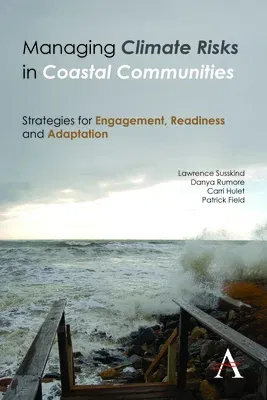Lawrence Susskind
(Author)Managing Climate Risks in Coastal Communities: Strategies for Engagement, Readiness and AdaptationHardcover, 15 September 2015

Temporarily out of stock
Free Delivery
Cash on Delivery
15 Days
Free Returns
Secure Checkout

Part of Series
Strategies for Sustainable Development Series, Anthem Environment and Sustainability Initiative (Aes
Part of Series
Strategies for Sustainable Development
Part of Series
Anthem Environment and Sustainability
Part of Series
Anthem Ecosystem Services and Restoration
Part of Series
Anthem Environment and Sustainability Initiative (Aesi)
Part of Series
Anthem Environment and Sustainability Initiative
Print Length
464 pages
Language
English
Publisher
Anthem Press
Date Published
15 Sep 2015
ISBN-10
1783084863
ISBN-13
9781783084869
Description
Product Details
Book Format:
Hardcover
Country of Origin:
US
Date Published:
15 September 2015
Dimensions:
23.11 x
15.24 x
3.56 cm
ISBN-10:
1783084863
ISBN-13:
9781783084869
Language:
English
Location:
London
Pages:
464
Publisher:
Series:
Strategies for Sustainable Development Series, Anthem Environment and Sustainability Initiative (AesStrategies for Sustainable DevelopmentAnthem Environment and SustainabilityAnthem Ecosystem Services and RestorationAnthem Environment and Sustainability Initiative (Aesi)Anthem Environment and Sustainability Initiative
Weight:
839.15 gm